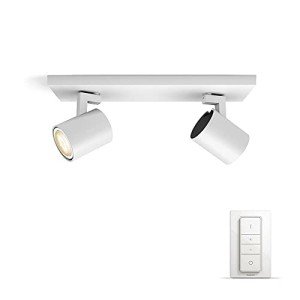
Traditional Lighting UK
Add a review FollowOverview
-
Founded Date September 14, 1949
-
Sectors Restaurant Services
-
Posted Jobs 0
-
Viewed 18
Company Description
10 Websites To Help You Become An Expert In Traditional Lighting UK
Traditional Lighting in the UK: A Comprehensive Overview
Traditional lighting holds a treasured location in the homes and public spaces of the United Kingdom. With its capability to evoke nostalgia, appeal, and heat, traditional lighting fixtures use not just visual appeal but likewise useful value. This post looks into the various types of traditional lighting common in the UK, their history and evolution, popular designs, and how to incorporate them into modern decoration.
A Historical Perspective on Traditional Lighting
The development of lighting in the UK has actually been comprehensive. From the flickering flames of candles and oil lamps to the arrival of gas and electric lights, the journey is as remarkable as it is enlightening.
Key Milestones in Lighting History:
- Candles (Before 1800s): The earliest form of synthetic light, utilizing tallow or beeswax.
- Oil Lamps (Late 18th Century): These became popular in homes and theaters, supplying brighter illumination than candle lights.
- Gas Lighting (Early 19th Century): Revolutionized public and street lighting before electrical energy took precedence.
- Electric Lighting (Late 19th Century): Marked the shift to modernity, with incandescent bulbs gradually changing older kinds.
Each of these advancements paved the method for traditional lighting, which still includes ancient methods into contemporary designs.
Types of Traditional Lighting
Traditional lighting can be categorized into several distinctive types, each with its special attributes.
1. Chandeliers
Chandeliers are often the centerpiece of a room. They can be found in different designs, from elaborate Victorian styles to easy, rustic designs.
Popular Features:
- Crystal embellishments
- Iron structure
- Numerous bulb types
2. Wall Sconces
Wall sconces supply both creative flair and soft illumination. They can be used in corridors, living rooms, or bathrooms, improving the atmosphere of an area.
Common Styles:
- Candle-style sconces
- Brass or iron fixtures
- Vintage-inspired styles
3. Table Lamps
Table lamps embody the versatility of traditional lighting as they can suit any room. Varying from simple designs to elaborate pieces, they are perfect for reading nooks, side tables, or desks.
4. Floor Lamps
Similar to table lamps in style and function, floor lamps can develop comfortable corners in a home. Vintage designs typically consist of tripod bases or detailed patterns.
5. Lanterns
Though typically associated with outdoor settings, traditional lanterns can likewise be utilized indoors for a rustic touch. They are available in various materials including wood and metal.
Integrating Traditional Lighting into Modern Decor
In a world progressively leaning towards minimalism and modern styles, traditional lighting still holds its ground. The secret is to maintain a balance. Here are some ideas for integrating traditional lighting into a contemporary home:
1. Mix Styles
Integrate traditional lighting with modern furnishings to create an eclectic room. For example, a vintage chandelier can be hung above a smooth dining table.
2. Use Dimmer Switches
To manage the ambiance, set up dimmer switches that permit for soft lighting, which matches both traditional and modern interiors.
3. Choose Mixed Materials
Select lighting fixtures that integrate different products, such as a wood lamp with a metal or glass base, to bridge the space between old and brand-new.
4. Highlight Architectural Features
Use traditional fixtures to highlight unique architectural features in your house. For circumstances, hanging a vintage lantern in a hallway with exposed brick improves its rustic appeal.
5. Incorporate Natural Elements
Pick styles that incorporate natural materials such as wood or wrought iron. These components tend to blend well with modern design while keeping a traditional flair.
Table: Comparison of Traditional Lighting Types
| Lighting Type | Description | Common Materials | Typical Settings |
|---|---|---|---|
| Chandeliers | Decorative ceiling fixtures, typically elaborate | Crystal, metal | Dining spaces, ballrooms |
| Wall Sconces | Mounted fixtures that offer ambient light | Brass, iron | Hallways, living spaces |
| Table Lamps | Portable lamps for tables and desks | Glass, ceramic | Bedrooms, workplaces |
| Floor Lamps | Standalone lamps for corner lighting | Wood, metal | Living spaces, dens |
| Lanterns | Rustic or vintage lights | Wood, metal | Patios, gardens |
Often Asked Questions
1. What is traditional lighting?
Response: Traditional lighting refers to lighting fixtures that embody historical or classic designs, often identified by the usage of elaborate products, intricate patterns, and a warm aesthetic.
2. How can I maintain traditional lighting fixtures?
Answer: Regular dusting and occasional deep cleansing are necessary. For fixtures with glass or crystals, use a mild glass cleaner. For metal elements, ensure you use proper cleaning options that will not harm the finish.
3. Are traditional lighting fixtures energy-efficient?
Response: Many traditional fixtures can accommodate modern LED bulbs, which offer much better energy efficiency. Constantly examine compatibility when switching to LED options.
4. Can I mix traditional lighting with modern design?
Answer: Yes, blending traditional lighting with modern décor can create a distinctively inviting space. Balance is important; opt for complementary designs to keep visual harmony.

5. What is the very best method to choose traditional lighting for my home?
Response: Consider your home’s general design, the function of the area, and personal taste. Take measurements to guarantee suitable sizing and choose materials and colors that harmonize with existing decoration.
Traditional lighting acts as an enduring link to history, workmanship, and aesthetics, proving that ageless designs have their rightful place, even in the middle of progressing patterns. Understanding the different kinds of traditional lighting and their application can assist homeowners develop welcoming spaces that reflect both elegance and warmth, perfectly blending the past with the present.



